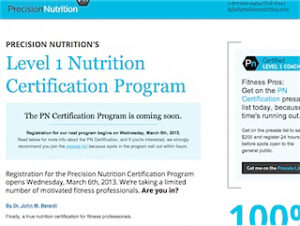
The benefits of exercise have been well documented in various studies. Recently, scientists from Kyoto, Japan, discovered one more way exercise helps us live a healthier and longer life. Performing a light workout that combines aerobic activity and resistance exercise 1 hour after you have your lunch or dinner will reduce the concentration of triglycerides in your blood (serum) which are normally elevated after a meal (post-prandial).
“A light workout that combines aerobic activity and resistance exercise 1 hour after your meal will reduce the post-prandial concentration of triglycerides in your blood”
What are Triglycerides?
Triglycerides (TG) are a type of fat (lipid) that circulates in our blood. When we eat a meal, our tissues use some calories immediately. The calories that are not used are converted to TG which are then transported and stored into our fat cells. When our body needs energy between meals, it taps into its fat reserves by releasing TG from the fat cells into the blood stream. Hormones regulate the level of TG in our blood. Yet, certain diseases, namely obesity and diabetes, disrupt this hormonal regulation and lead to high TG in the blood. High TG increases your risk for atherosclerosis, heart disease and stroke (cardiovascular disease—CVD).
When it comes to measuring the TG levels health professionals typically look at fasting TG levels. In this case, TG are obtained after an overnight fast. Normal fasting TG levels should be lower than 150mg/dL. If your fasting TG are high you can lower them through diet and lifestyle changes. Exercise as well as limiting alcohol, fat and sugar, are effective ways to lower TG. Also, if you are overweight, and you follow a healthy weight loss diet your fasting TG will come back to normal levels. Diets where carbohydrates account for more than 60% of total energy intake, can increase TG levels, in which case a carb controlled diet plan may be prescribed.
TG are elevated in our blood for a few hours after we eat a meal. For some people, TG may rise to abnormally high levels in their blood after they eat a meal. Studies have found that it’s not only the fasting TG but also the nonfasting TG levels that can increase the risk for CVD. A Denmark study found that the more the TG increases after a meal the more likely an individual will develop myocardial infraction and ischemic heart disease. We definitely need to keep our post-meal (post-prandial) TG levels low.
How do you keep the post-prandial TG levels low? Studies so far have shown that exercise (i.e brisk running, walking, or resistance exercise) performed before a meal can suppress the elevation of post-prandial TG. But this new study found exercise after a meal can rip the same benefits with regards to TG.
Exercise After a Meal Lowers TG
The study employed 10 healthy men and women in their twenties who did not exercise regularly. Each subject followed the following 3 procedures :
- Sedentary: The participant did not exercise. They just ate a test meal.
- Exercise before meal: The participant exercised one hour before eating the test meal.
- Exercise after meal: The participant exercised one hour after eating the test meal.
In all three cases, blood samples were obtained before meal and 2, 4 and 6 hours after meal.
The test meal was pretty big and high in fat. It consisted of 10% protein, 38% fat and 52% carbohydrates, for a total energy of 1,156 calories.
The exercise program involved 2km (1.24 miles) of brisk walking (at a speed of 2 steps/second) for half an hour followed by light resistance workout. The resistance workout included squats, shoulder press, lateral side raise, bent over rowing, biceps curl, and triceps extension, all performed for 15 reps using light weights (2-3kg). There was a 15-sec interval between each exercise.
In all 3 cases, when participants ate their meal, serum TG increased. Within 2 hours, post-meal triglycerides peaked and subsequently decreased but remained elevated even 6 hours after the meal when compared to the pre-meal level. Interestingly, in the “exercise after meal” condition (green bars), this transient prost-prandial TG elevation was the least pronounced.

Specifically, at 2 hours post meal, the serum TG concentration increased from around 66μg/dL to 172 in the sedentary condition, to 148 in the “exercise before meal” condition, and to 131 in the “exercise after meal” condition. These differences were found to be statistically significant.
Researchers integrated the values and found that exercise after a meal suppressed the elevation in postprandial TG concentration by 72%, while exercise before a meal resulted in only 25% TG suppression.
A similar effect of exercise was noted on lipoproteins VLDL, LDL, HDL. Lipoproteins are biochemical particles that carry lipids (i.e TG, cholesterol) from the liver to cells and back to the liver.
Why is this finding important
Previous studies have shown that exercise performed a few hours prior to having a meal reduces post-prandial TG concentration. In these studies, exercise was of either relatively high intensity or of low-intensity performed for a prolonged period of time (3 hours).
In contrast, this is the first study that shows that triglyceride levels after eating a high fat meal can be suppressed if exercise is performed after the meal. What’s more, exercising after a meal has a greater impact on reducing the post prandial TG elevation than exercising before a meal. In addition, the study shows that the kind of exercise that brings about this effect need not be neither intense nor prolonged. A 30-minute walk followed by lifting really light weights will do the job.
Given that post prandial TG is a risk factor for CVD, light exercise before and after a meal can be an effective measure to oppose the development of CVD.
Why does exercise reduce post-prandial triglyceride levels?
Researchers speculate that exercise after a meal suppresses TG levels through the following mechanisms:
1. Exercise improves fat utilization which in turn decreases TG.
Exercise makes our tissues metabolically more active. This means triglycerides break down (hydrolysis, catabolism) and get utilized faster. Specifically exercise was found to increase the concentration of Growth Hormone (GH) which is known to activate enyme lipoprotein lipase (LPL). This enzyme is also activated directly by the contractile activity of the muscle. LPL is responsible for the hydrolysis of TG in our skeletal muscles, the major site of TG catabolism. In simple words, exercise enhances nutrient metabolism by changing the secretion of several hormones and activating certain enzymes.
2. Exercise redistributes blood flow
Exercise following a meal slows down the absorption process in the gastrointestinal tract. Nutrients cross the intestinal wall to enter the circulation at a lower speed during exercise. It is possible that this delay might have an effect on TG concentration in the blood.
In Plain Terms
The conclusion that Dr Wataru Aoi and his Japanese colleagues came to is that “intensity exercise that combines walking and light resistance exercise suppresses the elevation of postprandial TG concentration when performed after the ingestion of a high-fat meal, and to a lesser extent when performed before meal intake, in healthy young subjects.
So, whenever you have a high fat meal, rest for an hour, and then hop on a treadmill or go outside for a 30 min walk. Then do a few reps of squats, push ups and leg raises to boost your growth hormone and get your metabolism sweep those damn excess triglycerides out of the way.
The study will be published in the February 2013 issue of Medicine & Science in Sports & Exercise.











0 Comments